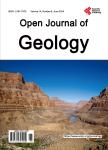Determining the Authenticity of Artifacts by Oxygen Isotope Analysis
Determining the Authenticity of Artifacts by Oxygen Isotope Analysis作者机构:Division of Paleontology (Invertebrates) American Museum of Natural History New York USA
出 版 物:《Open Journal of Geology》 (地质学期刊(英文))
年 卷 期:2013年第3卷第4期
页 面:313-321页
学科分类:1002[医学-临床医学] 100214[医学-肿瘤学] 10[医学]
主 题:Oxygen Isotope Patina Artifact Archaeology Speleothem
摘 要:A technique used to determine the authenticity of artifacts that compares the oxygen isotopic composition of speleothems to the carbonate included within the patina of unprovenanced artifacts is of questionable value. The unprovenanced Jehoash Inscription Tablet and James Ossuary are of potentially immense historical and cultural importance. Nevertheless, they both were rejected by workers based on the oxygen isotope technique which provided the major foundational evidence of forgery in the longest running archaeological trial in Israel. Nevertheless, both these artifacts were determined not to be forged. The initial incongruence between the oxygen isotopes of the speleothems of the Soreq cave (Israel) purported to represent the unique composition of Jerusalem rainfall, and the patina on the artifacts, can be readily explained by the accretion of materials and geo-biochemical processes expected in normal patina formation in the Jerusalem region. The patina formation involves sporadic events in disequilibrium kinetic processes that are opposed to the equilibrium formation of speleothems in a sealed cave. Moreover, 23 of 56 patina samples (41%) on well-documented ancient artifacts from Israel yielded oxygen isotope values greater or lower than the expected speleothem values of -4 δ18O ‰ [PDB] to -6 δ18O ‰ [PDB]. Thus, the speleothem-patina correlation is invalid and the applied oxygen isotopes technique for determining the authenticity of patinas on artifacts is not a useful tool in the authentication of artifacts.



